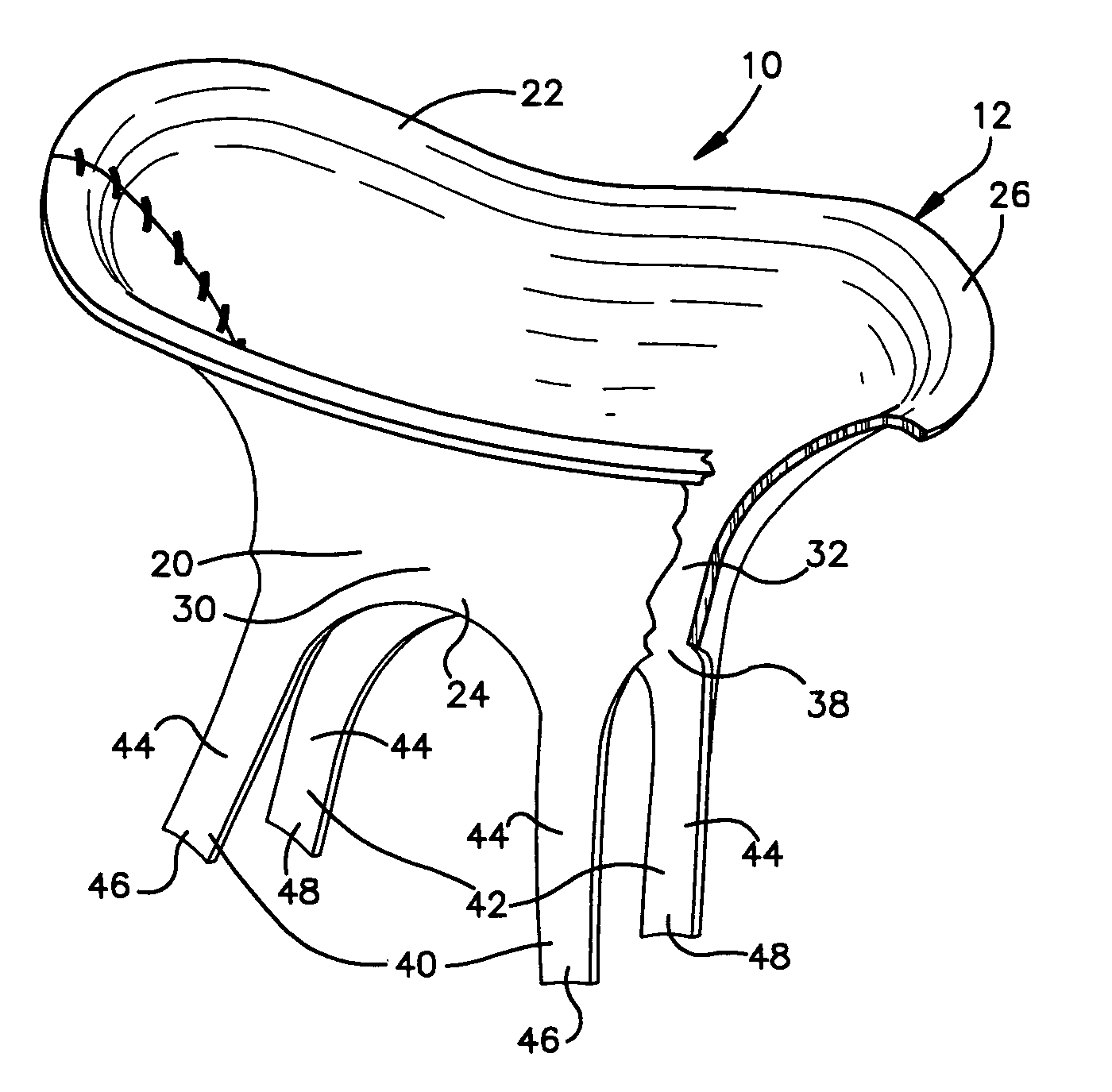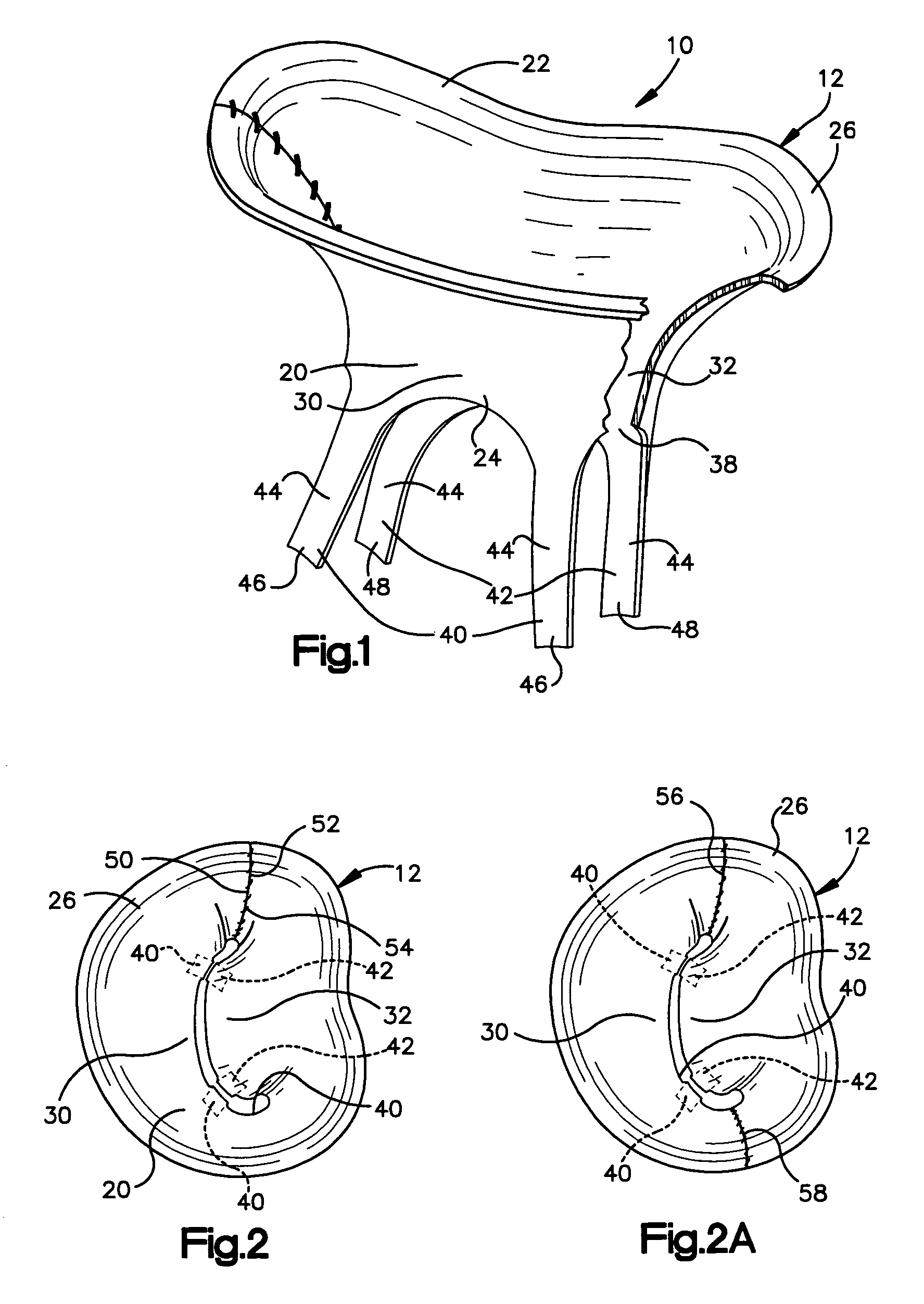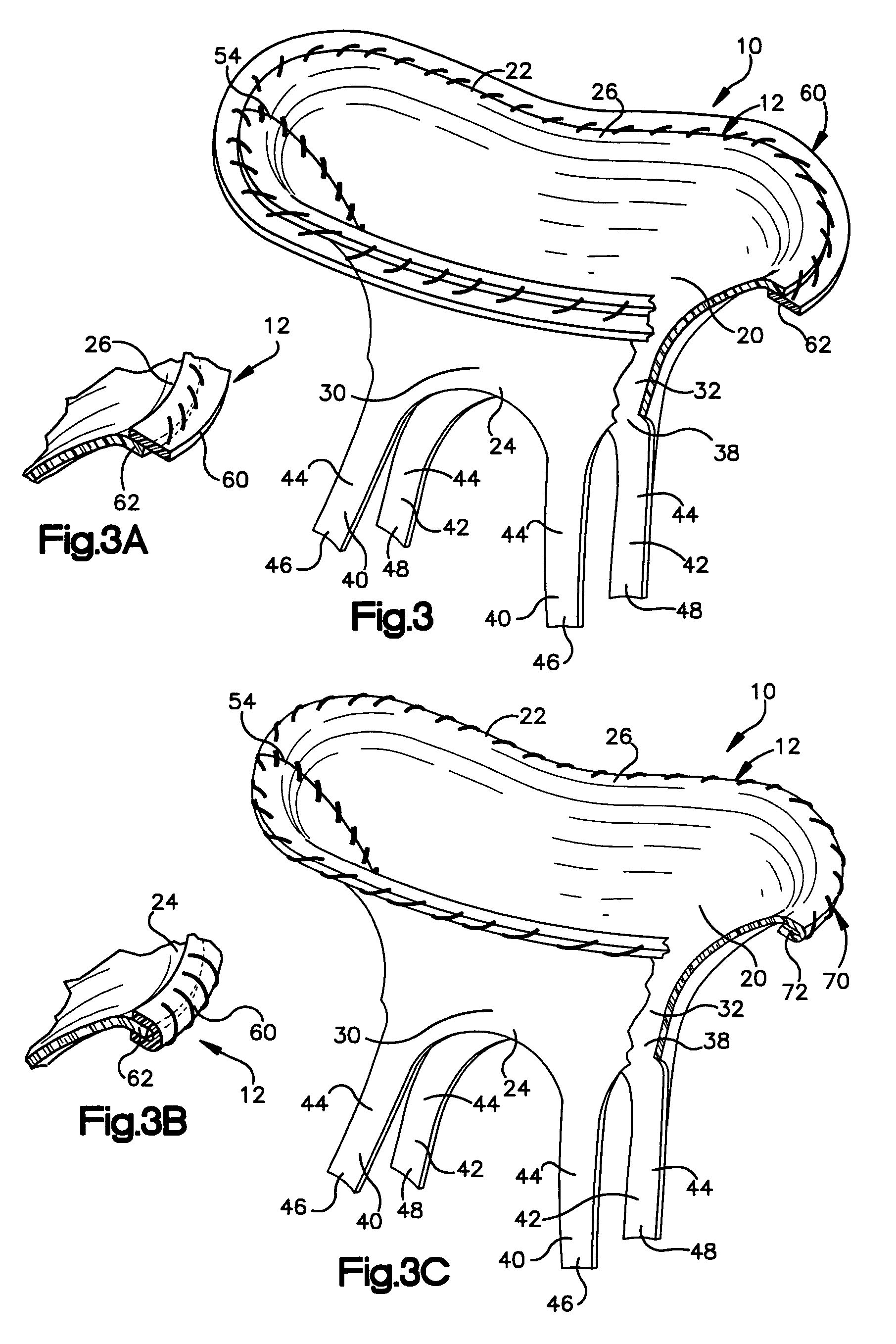Stentless bioprosthetic valve having chordae for replacing a mitral valve
a bioprosthetic valve and chordae technology, applied in the field of native mitral valve replacement with stentless bioprosthetic valve with prosthetic chordae, can solve the problems of high cardiac output, many additional problems that patients face, and inability to perform mitral valve replacement, and achieve the effect of preventing valve dilatation
- Summary
- Abstract
- Description
- Claims
- Application Information
AI Technical Summary
Benefits of technology
Problems solved by technology
Method used
Image
Examples
Embodiment Construction
[0033]The present invention relates to a method and apparatus for replacing a native mitral valve with a stentless bioprosthetic valve having prosthetic chordae. As representative of the present invention, FIG. 1 illustrates an apparatus 10 comprising a stentless bioprosthetic valve 12 for replacing a native mitral valve 14 (FIG. 4).
[0034]The bioprosthetic valve 12 shown in FIGS. 1 and 2 is made from one or more pieces of biocompatible material formed into a bi-leaflet conduit 20 having dimensions that correspond to the dimensions of the native mitral valve 14. The conduit 20 has a proximal end 22 and a distal end 24. The proximal end 22 defines a first annulus 26 for suturing to the valve annulus of the native mitral valve 14, as described further below.
[0035]The conduit 20 further includes first and second leaflets 30 and 32 that mimic the three-dimensional anatomical shape of the anterior and posterior leaflets 34 and 36 (FIG. 4), respectively, of the native mitral valve 14. The ...
PUM
 Login to View More
Login to View More Abstract
Description
Claims
Application Information
 Login to View More
Login to View More - R&D
- Intellectual Property
- Life Sciences
- Materials
- Tech Scout
- Unparalleled Data Quality
- Higher Quality Content
- 60% Fewer Hallucinations
Browse by: Latest US Patents, China's latest patents, Technical Efficacy Thesaurus, Application Domain, Technology Topic, Popular Technical Reports.
© 2025 PatSnap. All rights reserved.Legal|Privacy policy|Modern Slavery Act Transparency Statement|Sitemap|About US| Contact US: help@patsnap.com



